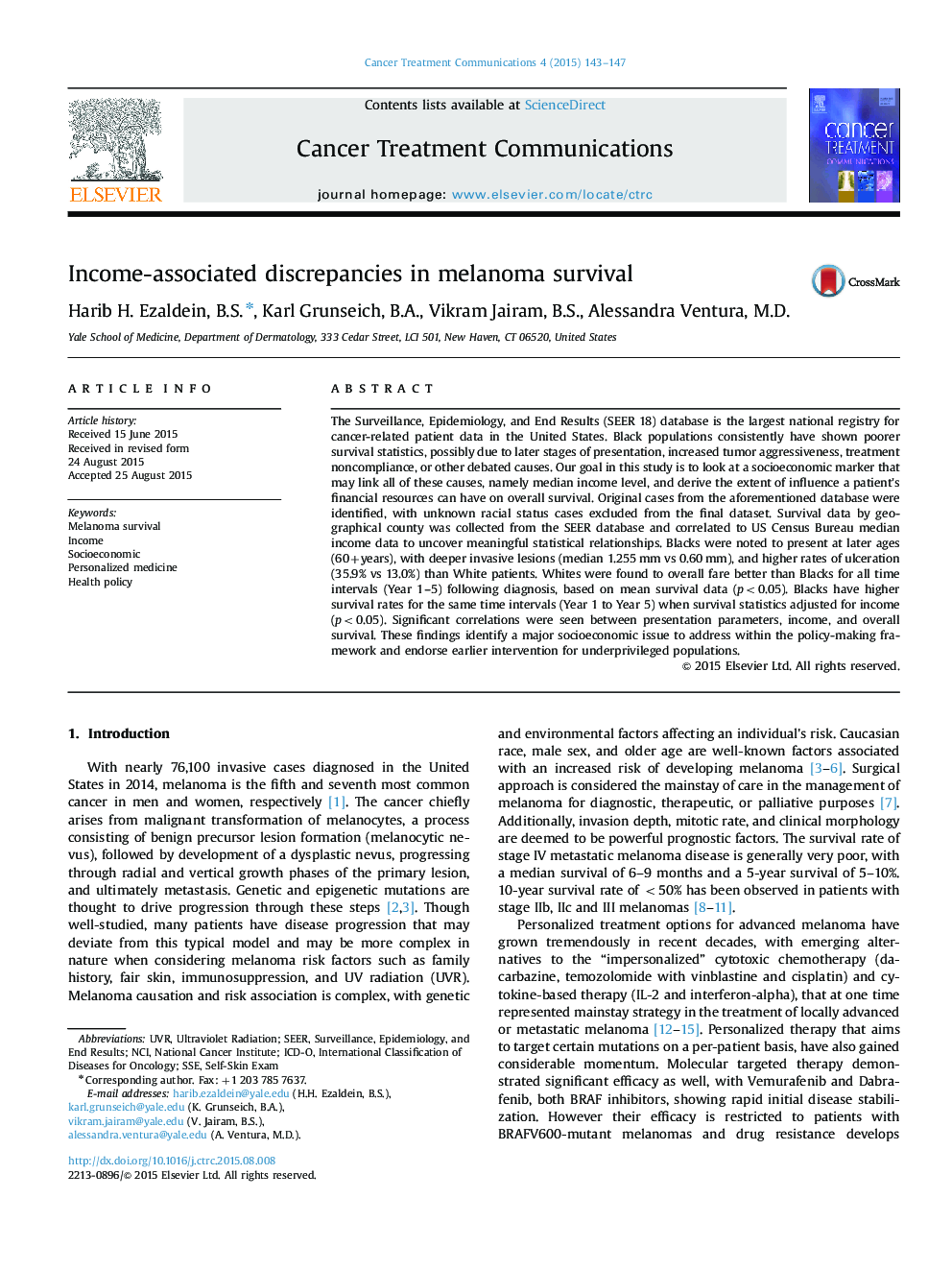| Article ID | Journal | Published Year | Pages | File Type |
|---|---|---|---|---|
| 6190283 | Cancer Treatment Communications | 2015 | 5 Pages |
The Surveillance, Epidemiology, and End Results (SEER 18) database is the largest national registry for cancer-related patient data in the United States. Black populations consistently have shown poorer survival statistics, possibly due to later stages of presentation, increased tumor aggressiveness, treatment noncompliance, or other debated causes. Our goal in this study is to look at a socioeconomic marker that may link all of these causes, namely median income level, and derive the extent of influence a patient's financial resources can have on overall survival. Original cases from the aforementioned database were identified, with unknown racial status cases excluded from the final dataset. Survival data by geographical county was collected from the SEER database and correlated to US Census Bureau median income data to uncover meaningful statistical relationships. Blacks were noted to present at later ages (60+years), with deeper invasive lesions (median 1.255Â mm vs 0.60Â mm), and higher rates of ulceration (35.9% vs 13.0%) than White patients. Whites were found to overall fare better than Blacks for all time intervals (Year 1-5) following diagnosis, based on mean survival data (p<0.05). Blacks have higher survival rates for the same time intervals (Year 1 to Year 5) when survival statistics adjusted for income (p<0.05). Significant correlations were seen between presentation parameters, income, and overall survival. These findings identify a major socioeconomic issue to address within the policy-making framework and endorse earlier intervention for underprivileged populations.
